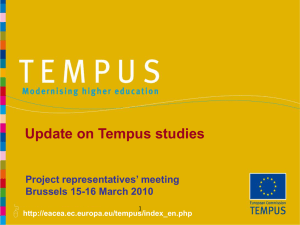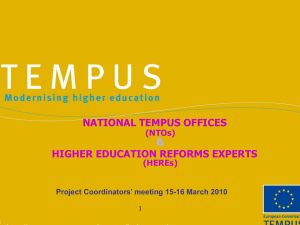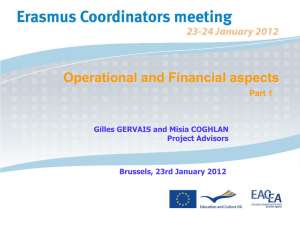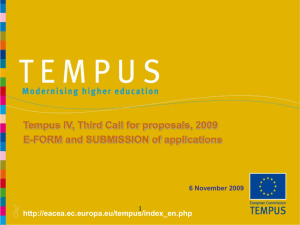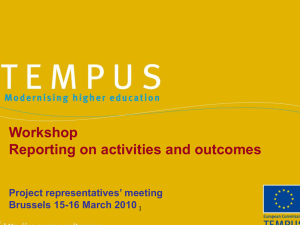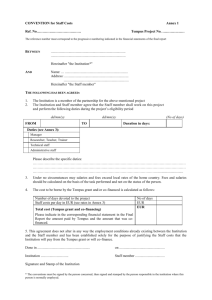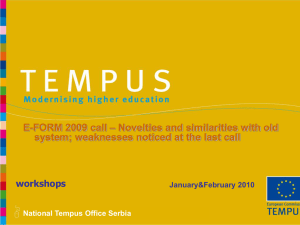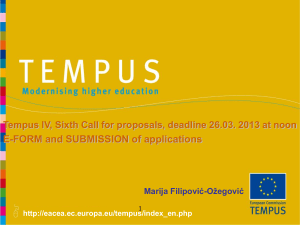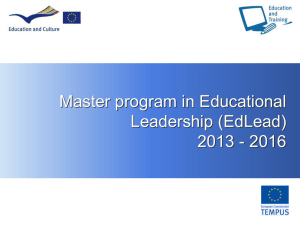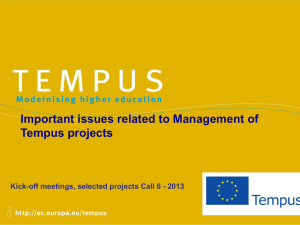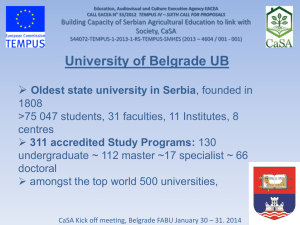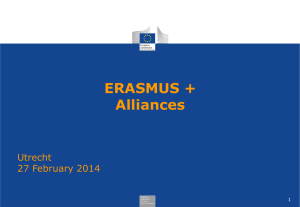Folie 1 - EACEA
advertisement
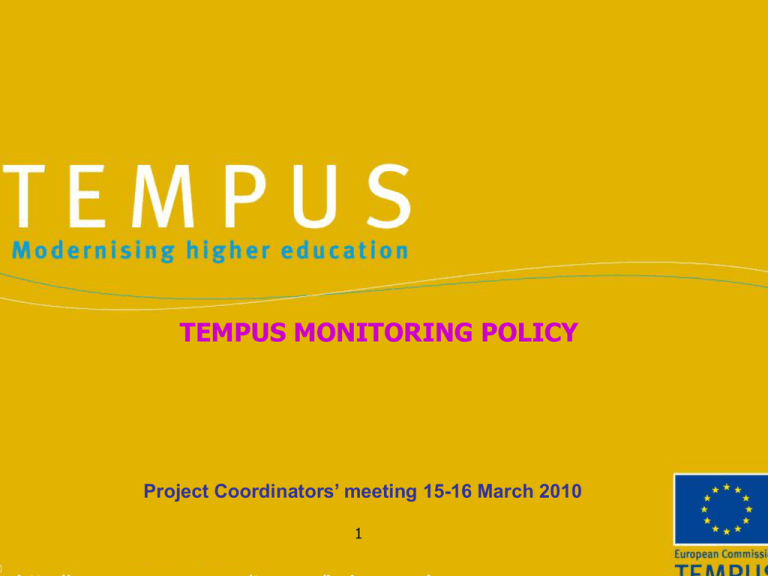
TEMPUS MONITORING POLICY Project Coordinators’ meeting 15-16 March 2010 1 WHY Monitoring Management instrument, both for projects that might be encountering problems & for projects which are enjoying particular success Benefits extend beyond a given project: lessons can be learnt - best practice can be disseminated General objectives: - To maximise the impact of the Tempus programme - To maximise the return on investment of EU funds - To ensure proper use of tax-payer money - To control and assess the beneficiaries’ performances http://eacea.ec.europa.eu/tempus/index_en.php Monitoring activity DESK Monitoring (Brussels HQ) - Written reports by Coordinators - Minutes of beneficiaries’ meetings - Exchange of mails with coordinators/beneficiaries - Publications; websites of the projects / of the beneficiaries http://eacea.ec.europa.eu/tempus/index_en.php Monitoring activity FIELD Monitoring (on the spot) Actors: EACEA staff, NTOs, EU Delegations, External consultants Locations: Any place concerned by the project Wish/request: As much concerned partners involved http://eacea.ec.europa.eu/tempus/index_en.php Monitoring activity FIELD Monitoring (on the spot) - To monitor the progress and achievements in their real context - To judge whether the project is progressing according to plan - To assess whether the project is producing the expected benefits - To scrutinise the context in which the programme is operating - To highlight the added value for modernising HE policy - To assess the visibility and the potential for sustainability of the project - To be informed about financial management / accounting system put in place FEEDBACK TO COORDINATORS http://eacea.ec.europa.eu/tempus/index_en.php Monitoring activity Financial AUDIT (on the spot) By sample Upon request by EACEA project officer, EU Delegation, EACEA financial unit, EC DGs At any time, usually after the end of the project (within 5 years) EACEA Staff, Independent auditor, OLAF http://eacea.ec.europa.eu/tempus/index_en.php Three functions for Field Monitoring Preventative information on the rules & procedures review of the objectives, priorities, methodology, activities planned further recommendations 3-12 months after the beginning of the eligibility period Recommendations results should appear in the interim report http://eacea.ec.europa.eu/tempus/index_en.php Three functions for Field Monitoring Advisory advice to accompany the project implementation check content and financial aspects (based primarily on the content of the interim report) In the last 6-12 months of the eligibility period Links between the interim report and the situation on the ground Recommendations for the continuation of the project http://eacea.ec.europa.eu/tempus/index_en.php Three functions for Field Monitoring Control check and assessment of the results assessment of impact, sustainability, tender procedures, accounts After the completion of the project: 3-15 months after the end of the eligibility period Financial management & accounting relating to the use of the grant http://eacea.ec.europa.eu/tempus/index_en.php FIELD Monitoring Our Objectives • To know the projects • To know the beneficiaries, to support them • To improve further the functioning of the Tempus programme Our Targets • Two thirds (2/3) of the projects are visited annually • Each project financed, on average, is visited twice during its lifetime and beyond http://eacea.ec.europa.eu/tempus/index_en.php
